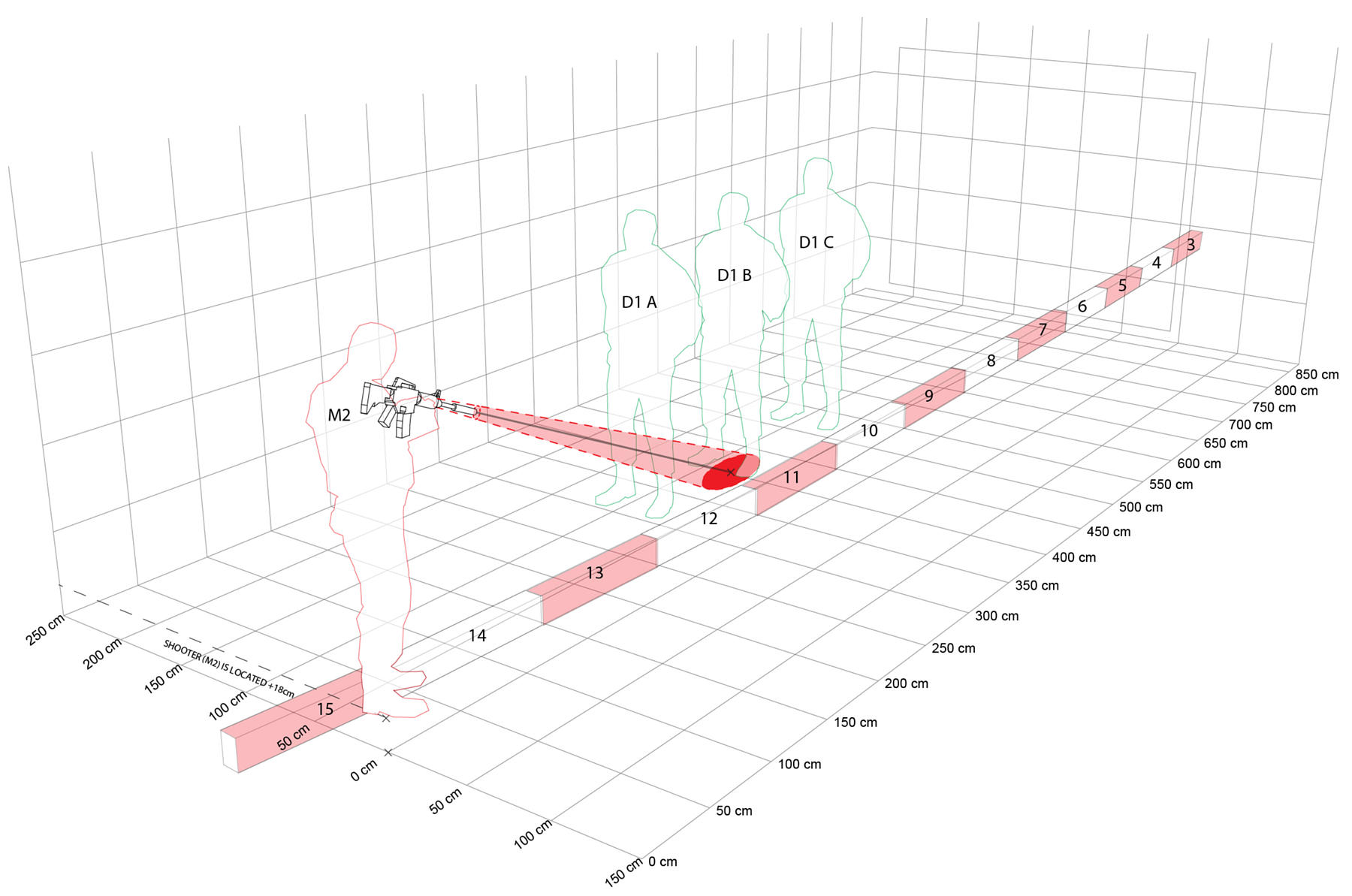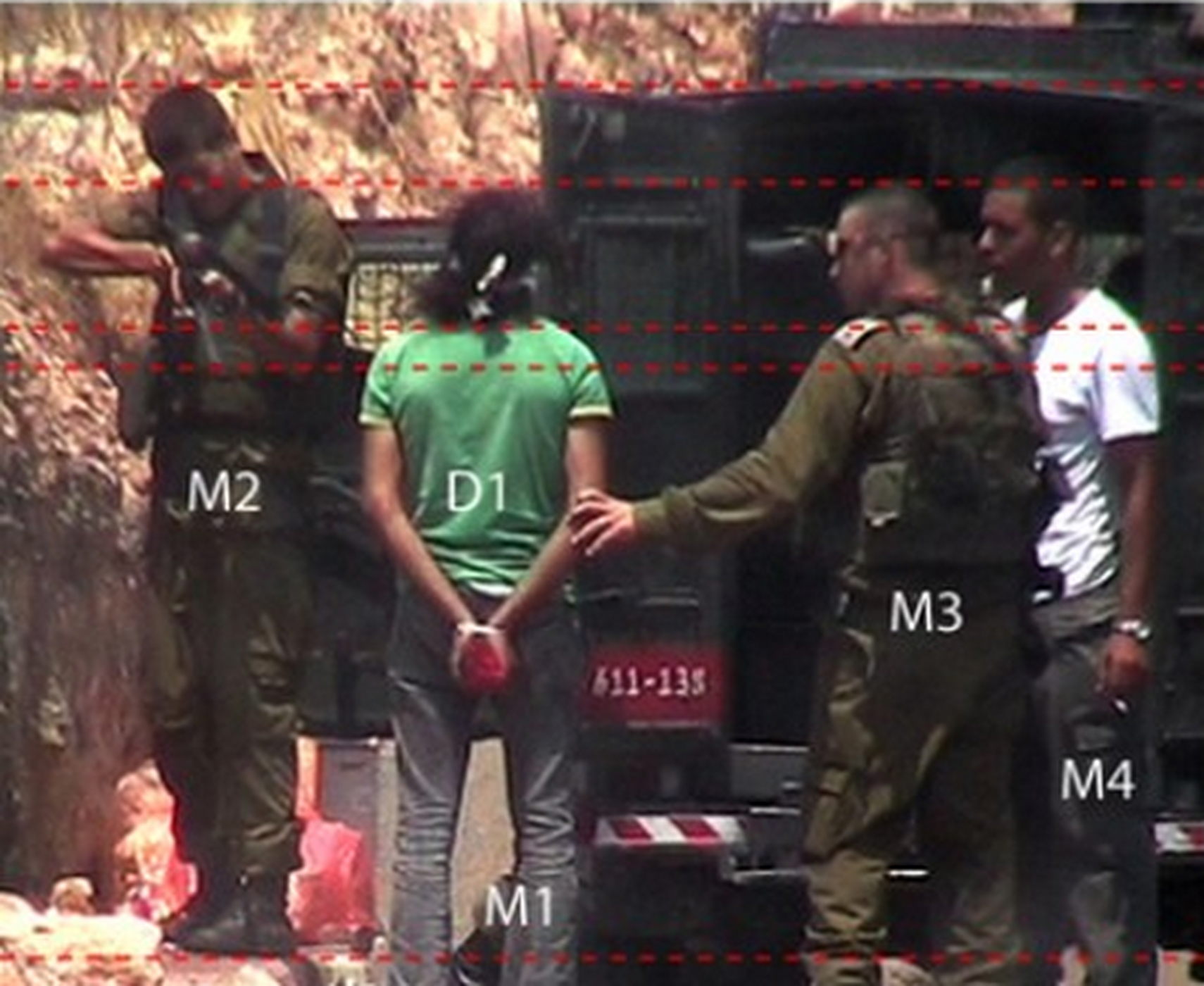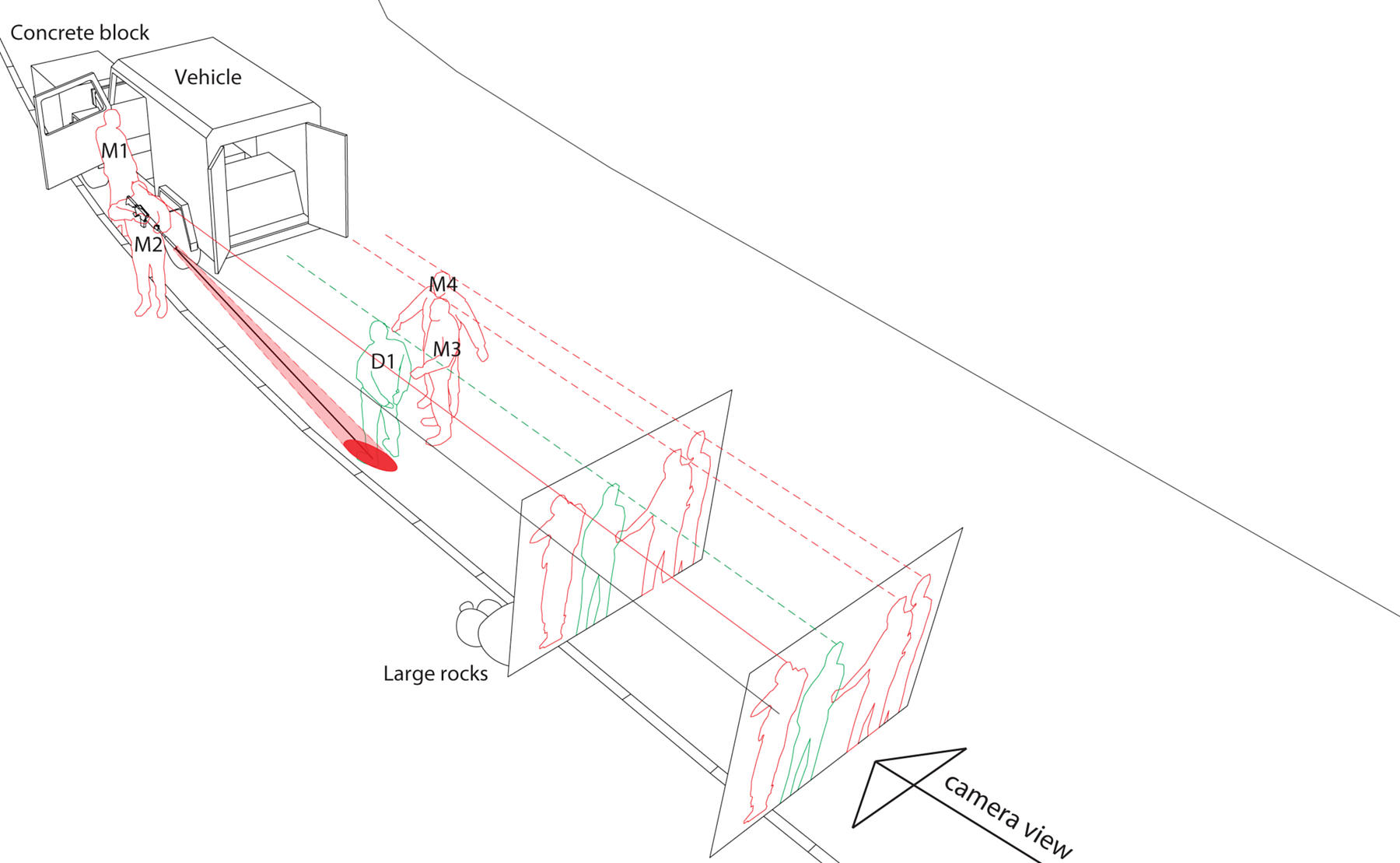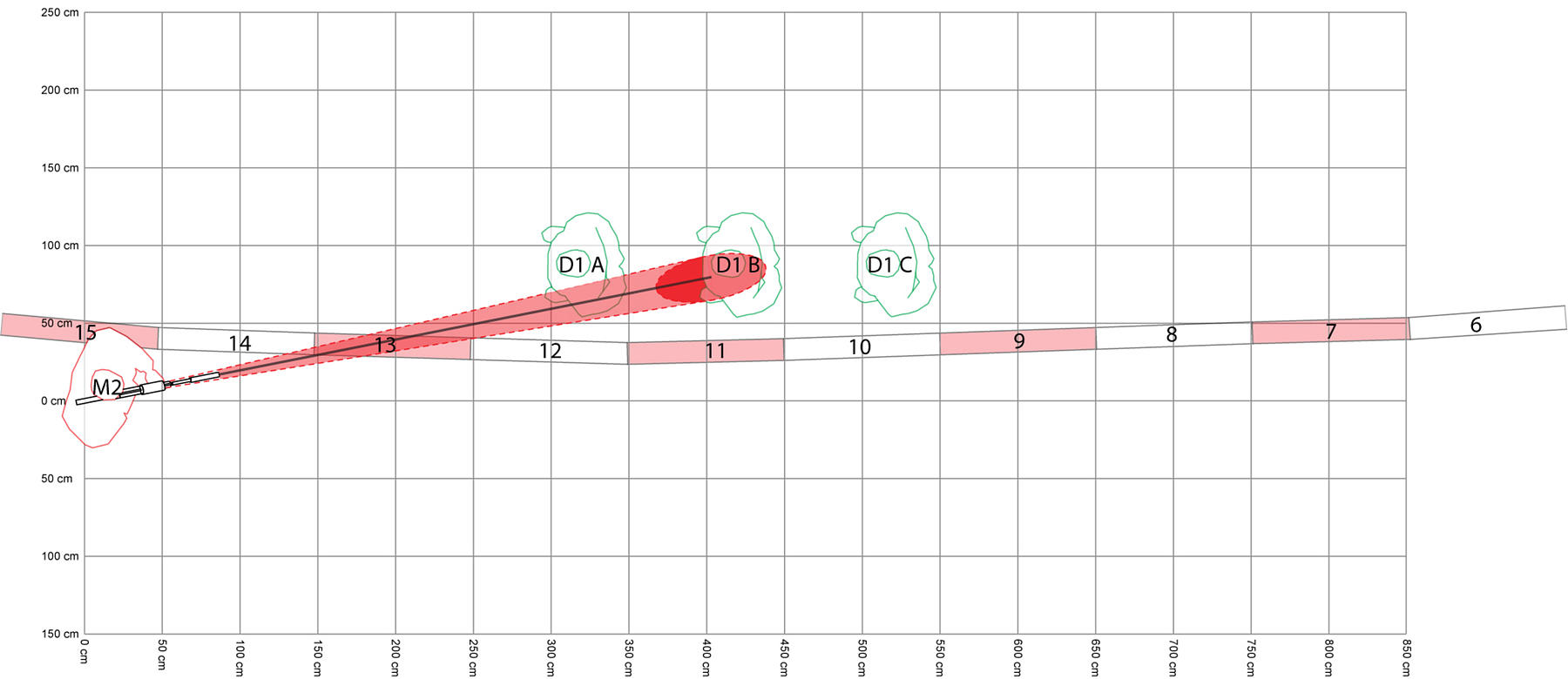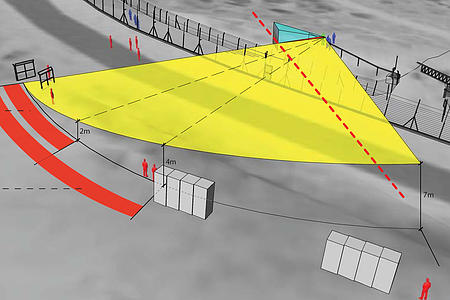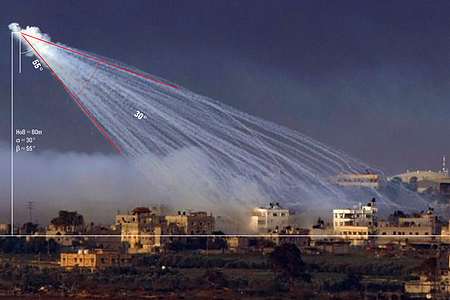Nil'ln Report
SITU Research created a spatial reconstruction of events surrounding the detention and alleged abuse of a Palestinian protester from citizen video footage captured in Nil’In.
Ashraf Abu Rahma, a Palestinian demonstrator, and brother of Bassem Abu Rahma, the subject of the Bil'In Report, was detained by an Israeli Lieutenant Colonel before a rubber bullet fired by another Israeli soldier grazed his foot. After the incident, he received care from an army medic and was released without further questioning. Using footage captured by a Palestinian girl who witnessed the event from her house in Nil'In, SITU constructed a range of positions for both the soldiers and detainee, in an attempt to decipher whether the soldier was aiming directly at Abu Rahma, or two meters behind him, as the shooter later claimed.
The Israeli human rights organization B'Tselem asked Forensic Architecture and SITU Research to create a spatial reconstruction of events surrounding the detention of a protester from video footage. While the footage is cropped directly above his feet, it had been established that a rubber bullet grazed the detainee's, Ashraf Abu Rahma, foot as he was blindfolded, cuffed, and held in place by an Israeli lieutenant colonel. The soldier who discharged the round claimed he was aiming two meters behind Abu Rahma when he fired at the unarmed detainee. Using the available footage, this work sought to reconstruct the space of the incident, in an attempt to present legal evidence for a military investigation into the matter.
Video footage was used to reconstruct the scene and accurately position all actors involved in order to determine whether the soldier was aiming and intending to strike the protester. SITU began to analyze the video footage by identifying the elevation and angle of the rifle seen in the video frame immediately preceding the shooting. Using this information, an axonometric view of the scene could be extrapolated, illustrating the known position of the shooter and possible positions of the detainee. The dashed lines connecting the plane of the camera view with the positions of soldiers and the detainee serve as axes along which all possible locations for the individuals exist.
With the location of the shooter (M2) established, the positions of the detainee (D1) and two other soldiers (M3, M4) was approximated because their precise locations weren't able to be deduced from the available footage. Shown below is a static image describing three possible locations for the detainee overlaid on a .5 meter grid. In an attempt to further define rifle position in respect to the potential position of the detainee, SITU also created a video employing the 3D modeling software Rhinoceros, and Grasshopper, a graphical algorithm plug-in.
Unfortunately, the original footage of the event did not offer a view of the shooting which could conclusively place the soldier and detainee into a well-defined spatial relationship. As a result, SITU's analysis was inconclusive and could only provide a range of positions for the detainee. Due to this uncertainty, the work provided an insufficient level of accuracy in establishing whether or not the soldier was aiming directly at Abu Rahma's feet, or two meters behind as the soldier later claimed.
